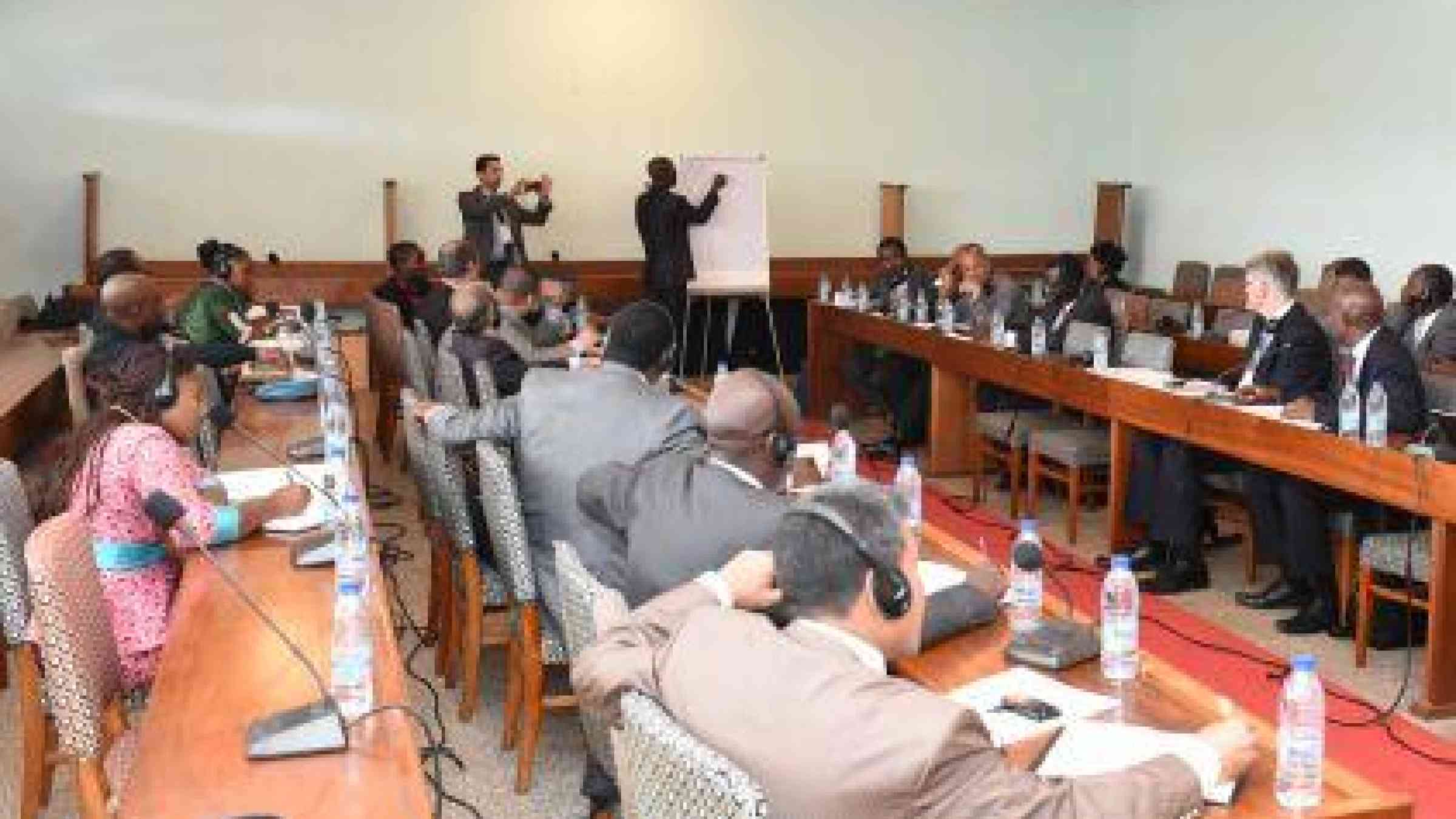Africa sketches Sendai Framework plan

YAOUNDE, 22 July 2015 – African governments have begun sketching out a continent-wide plan to implement the Sendai Framework for Disaster Risk Reduction, a 15-year global pact that seeks to rein in the impact of natural and man-made hazards.
On the eve of a key ministerial gathering in Cameroon’s capital Yaoundé, experts from across the continent probed ways to make sure that Africa’s disaster risk reduction dovetails with the Sendai Framework.
The 7th Africa Working Group Meeting on Disaster Risk Reduction on Tuesday and Wednesday is followed on Thursday by the 4th High Level Meeting on Disaster Risk Reduction. The latter is due to issue a formal declaration giving political weight to a continent-wide alignment with the Sendai Framework.
“Our actions must lead states to take ownership of the Sendai Framework and put the measures into place,” said Nelson Akibode, Togo’s disaster risk pointman.
During Wednesday’s sessions, delegates called for standardized methodology, guidelines, procedures and tools for risk assessment and analysis to be used in Africa by 2018. They also urged countries to set up a mechanism to share best practices by 2016, hold continent-wide simulation exercises in 2017, and establish a disaster risk trust fund by 2018.
The Yaoundé meetings carry extra symbolism as they are the first inter-governmental session on putting the Sendai Framework into action since its adoption in March at the World Conference on Disaster Risk Reduction. Other regions of the globe are due to hold their own versions over the coming months.
A declaration from ministers for whom disaster risk reduction is not necessarily daily fare will be a crucial contribution to the global process.
“We still have a lot to do for understanding this concept of disaster risk reduction,” said Dominique Kuitsouc, a senior expert at the Economic Community of Central African States, a 10-nation grouping that adopted a disaster risk reduction strategy in 2012.
“Decision-makers need to understand where we’re going. So raising awareness at the highest level is important,” he added.
The global focus has gradually shifted over the past two decades from seeing disasters as a matter of humanitarian aid after the event to viewing them with the wider lens of risk reduction.
The Yaoundé talks involve four dozen governments, Africa’s Regional Economic Communities, the African Union and a swath of international organizations.
“We are not dealing with disaster risk reduction for the sake of disaster risk reduction. We’re trying to deal with disaster risk reduction for the sake of sustainable development and poverty reduction,” said Prahsant Singh, Africa disaster risk management coordinator at the World Bank.
The Sendai Framework has four priorities: improving risk governance, understanding disaster risk, investing in resilience and enhancing preparedness for effective response, recovery, rehabilitation and reconstruction.
Its impact up to 2030 and beyond will hinge on meeting seven global targets, including substantial reductions in disaster mortality, numbers of people affected, economic losses and damage to critical infrastructure.
Natural and man-made hazards mesh together to claim lives, ruin livelihoods and undermine development. Integrating risk reduction into all areas of policy and planning is therefore central for sustainable development. Targeted action is needed to deal with underlying risk drivers such as poverty, disease climate change, unplanned urbanization, population growth, poor land management, decimation of ecosystems, and weak governance and policies.
Africans all too often find themselves on the front line.
Data from the last two decades show that in terms of absolute numbers affected by disasters, Africa has two countries in an otherwise-Asian top ten: Kenya and Ethiopia. When the figures are standardized per 100,000 of population, the picture is starker: Eritrea, Lesotho, Zimbabwe, Somalia, Kenya and Niger emerge as the worst-affected.
Direct economic losses from disasters so far this century are estimated to have reached US$2.5 trillion globally. Losses in 40 low- and middle-income countries amounted to US$305 billion over the last 30 years. In Africa alone, from 1990 to 2012, an average of 152 disasters were recorded per year, the majority triggered by hydro-meteorological hazards such as floods and storms. In 2014, over 6.8 million Africans were affected directly by a total of 114 recorded disasters.
Africa has been a global pioneer in disaster risk reduction, being the first region to establish its own strategy, a year before the 2005 adoption of the Hyogo Framework for Action, the Sendai Framework’s predecessor.
Africa has three dozen National Platforms for Disaster Risk Reduction, a key tool for understanding and curbing risk, and central to the Hyogo Framework. Countries have also held regular Regional Platforms, the fifth African edition of which was in May 2014 in Nigeria and created a common position to help craft the Sendai Framework.